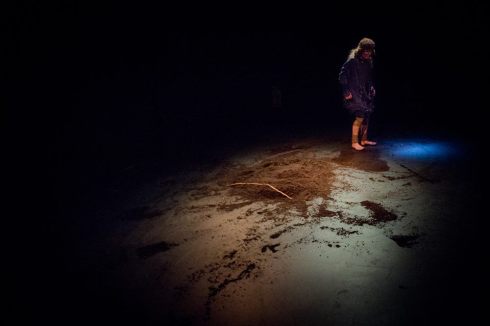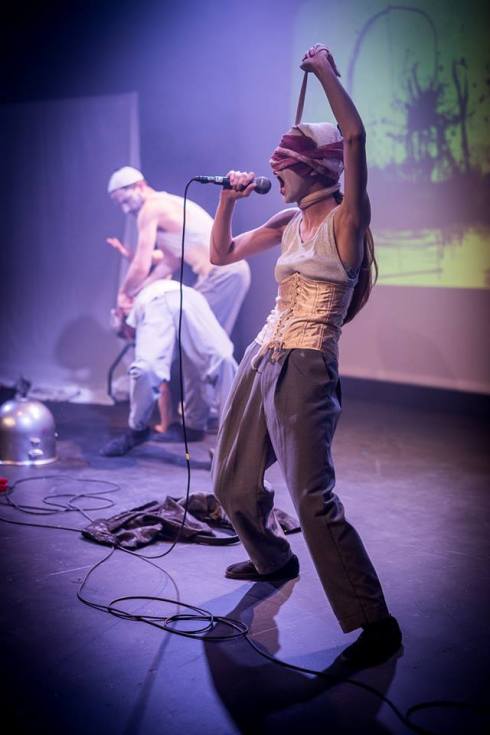Winnie Hopper is a playful and minimalist piece of physical theatre presented by two immediately likeable performers; the work of two new artists, Jenny Lyn and Andrew Simpson, and is one of the few Snapshots of work still in development available to be seen during the Manipulate Festival.
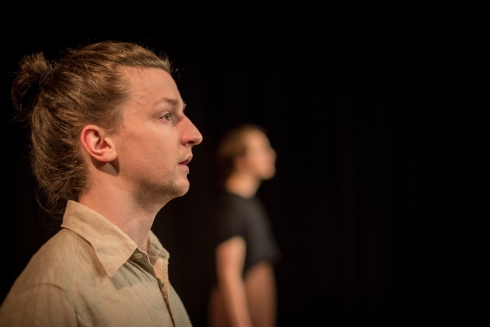 It is easy to see that there is a great deal of passion for the material on the stage and the work that has been created thus far is brave and explorative. The idea for the play stems directly from a true story involving Lyn’s grandmother, who welcomed a soldier from WW2 into her home and leaves her feeling betrayed and violated after robbing her and dissapearing. During the Q&A Lyn describes this story with great excitement and includes many lovely visual details including her grandmother pushing a pram full of vegetables up the steep hills of her street.
It is easy to see that there is a great deal of passion for the material on the stage and the work that has been created thus far is brave and explorative. The idea for the play stems directly from a true story involving Lyn’s grandmother, who welcomed a soldier from WW2 into her home and leaves her feeling betrayed and violated after robbing her and dissapearing. During the Q&A Lyn describes this story with great excitement and includes many lovely visual details including her grandmother pushing a pram full of vegetables up the steep hills of her street.
Unfortunately this moment, and other magnificent ones like it, have not yet made it into the work which left me wanting more at times.
The piece opens with Lyn and Simpson singing a simple folk song about a woman who suffers a physical assault from a man and whilst this is a powerful message sung beautifully its contents prepare the audience for an act of violence that never happens and as a result it distracts from the physical work.
During the Q&A they expressed a desire to work on more material to increase the length of the piece, which currently sits at around twenty minutes, however it may be better to examine their current work closer and develop those existing ideas to create a larger impact. It is important to remember that this is still a work in progress from two young and highly intelligent theatre-makers. There is fantastic potential within this work and the and ideas that exist make for a wonderful starting point that can only improve.
There are many gorgeous moments to be found in Winnie Hopper. The stand out moments being the times when they highlight the different natures of the two characters in the story and bring a real sense of intimacy, or a lack thereof, to the relationship. There is potential, with hard work and self-examination, for Winnie Hopper to be magnificent and I personally will be watching their development in the future excitedly.






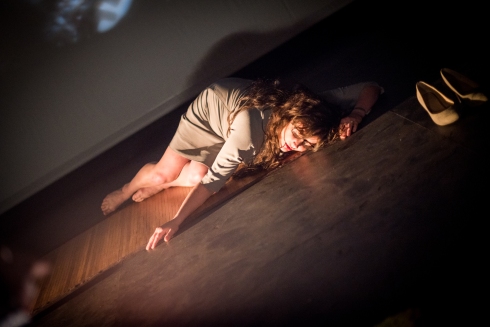 The escape to Japan also gains a little more significance later on, when the protagonist clashes with her past during the attempt to clear out the mother’s house after her death. One can feel the anxiety and dread of the performer when she realises that even in her death, her mother pulls her back into this universe of clutter, baggage and regalia. The symbolic and geographical escape is rendered impossible in her mother’s final attempt to keep holding on to everything: even and especially over her dead body, the daughter is forcibly returned and re-collected. This makes one think about the horrors of a horder’s legacy. Nature or nurture? Either way, is there an escape from all the trappings?
The escape to Japan also gains a little more significance later on, when the protagonist clashes with her past during the attempt to clear out the mother’s house after her death. One can feel the anxiety and dread of the performer when she realises that even in her death, her mother pulls her back into this universe of clutter, baggage and regalia. The symbolic and geographical escape is rendered impossible in her mother’s final attempt to keep holding on to everything: even and especially over her dead body, the daughter is forcibly returned and re-collected. This makes one think about the horrors of a horder’s legacy. Nature or nurture? Either way, is there an escape from all the trappings?







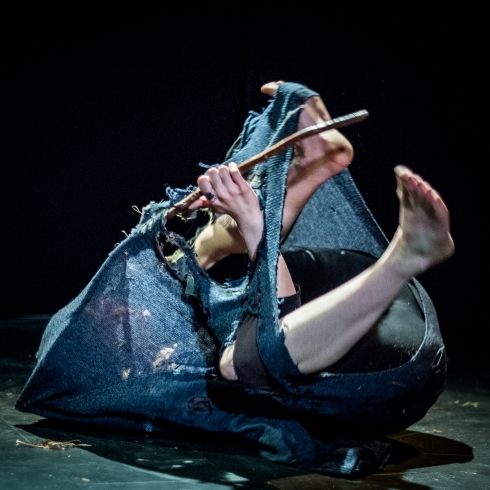 What is so brilliant about Bird is that everything on stage is relatable on a most primitive level. Piaraccini’s performance is nuanced and clever. There are no words uttered – for what good are words when there is no-one to talk to – but we are still acutely aware of her pains and her loneliness, thanks to her ability to express emotion even with the flicker of a finger or the turn of her head. Ultimately it is a simple little tale, but one that shows that Piaraccini really gets what it is to be human.
What is so brilliant about Bird is that everything on stage is relatable on a most primitive level. Piaraccini’s performance is nuanced and clever. There are no words uttered – for what good are words when there is no-one to talk to – but we are still acutely aware of her pains and her loneliness, thanks to her ability to express emotion even with the flicker of a finger or the turn of her head. Ultimately it is a simple little tale, but one that shows that Piaraccini really gets what it is to be human.